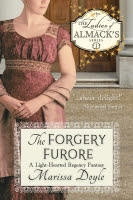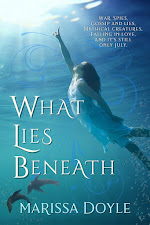Memorial Day may have already happened, but in Victorian England, every day was Memorial Day. My friend and fellow Book View Cafe author Brenda W. Clough explains why.
The 19th
century was prime time for cemeteries and monuments. Partly this was a status
thing. If you were important, you wanted a big fancy tomb so that everyone for
the next thousand years or so would appreciate your status. Also partly this
was just the look of the time. For Victorians, more was more – another pattern,
some more marble fretwork, always good.
 |
| Photo by DAVID ILIFF. License: CC BY-SA 3.0 |
The
Albert Memorial, erected by Queen Victoria in memory of her husband Prince
Albert, carries this just about as far as it can go. It cost millions of pounds and is adorned
with lots of friezes and allegorical statue groups. The ornate Gothic spire,
176 feet tall, shelters a statue of the Prince plated in gold. The Queen wanted to be sure that everybody,
for all time, could see at a glance how important and wonderful her Prince was.
But
there’s also the issue of personalization. You don’t want your tomb to look
just like everyone else’s, do you? Sure, you could just have a statue of yourself,
but everybody famous does that. When you look at that gold statue of Prince
Albert, do you get any sense of why he was interesting? No.
 |
Photo by Nicholas Jackson
|
This
one is a great example of how it should be done. George Wombwell ran a famous
traveling menagerie in the mid-1800s in England. His favorite lion Nero went
with him everywhere. Now a statue of Nero lies mourning on Wombwell’s grave in
London, making the lion tamer’s last resting place instantly recognizable and
one of the favorite sights of Highgate Cemetery.
And then
there are purely practical considerations. In Victorian England it was
difficult for doctors to study anatomy by dissection. The only way to get a
fresh human body was by finding an execution, and there just weren’t that many
criminals getting the death penalty. The demand became so severe that a
grave-robbing industry sprang up. Criminals would sneak into the cemetery at
night, suss out the freshest grave, and dig up the coffin. Then they’d pop the
body out for sale to med students.
 |
Mortsafe, Greyfriars Kirkyard; photo by Kim Traynor
|
It got
sufficiently bad that the family might guard the cemetery at night for a while,
to be sure that Grandpa didn’t get stolen after his funeral. If they had the
money, they might also have a mortsafe installed over the gravesite. This was
simply a large grate bolted down over the tomb, something like a bike lock only
for coffins. Nowadays people like to think that these were to be sure the dead
person didn’t rise up like a zombie. But in the 19th century, it was
to ensure that he’d really rest in peace.
Brenda W. Clough is the first female Asian-American
SF writer, first appearing in print in 1984. Her novella ‘May Be Some Time’ was
a finalist for both the Hugo and the Nebula awards and became the novel Revise
the World. Her latest time travel trilogy is Edge to Center, available at Book View Café.
In 2021 she began publishing Marian Halcombe,
a series of eleven neo-Victorian thrillers. Marian will tell you herself
that she is a proper Victorian lady, because this keeps people happy--and unsuspecting. But those who know her will tell you that she's the
most dangerous woman in Europe. Her adventures are appearing one a month
at BVC, and the first volume is free! Get it here: Marian Halcombe | Book View Cafe. Brenda's complete bibliography is up on her web
page, brendaclough.net









No comments:
Post a Comment